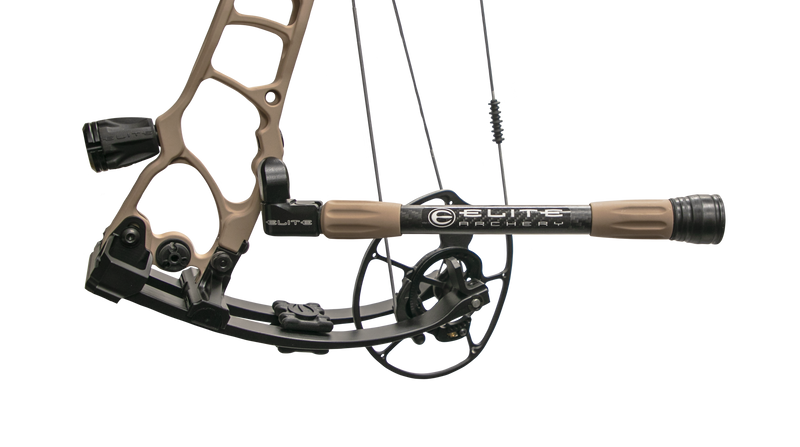Release Your Complete Potential with the most up to date Bow Stabilizer Innovations
Release Your Complete Potential with the most up to date Bow Stabilizer Innovations
Blog Article
Maximize Your Archery Accuracy With These Bow Stabilizer Techniques
One critical aspect that can significantly influence your performance is the appropriate usage of bow stabilizers. Whether you are an experienced archer looking to improve your abilities or a newbie anxious to boost your accuracy, grasping these bow stabilizer techniques might be the secret to hitting your mark with unequaled uniformity.
Advantages of Utilizing Bow Stabilizers
Using bow stabilizers can dramatically boost an archer's accuracy and overall efficiency by minimizing bow torque and resonance. Furthermore, bow stabilizers moisten resonance, which not just boosts the comfort of capturing but likewise prevents the bow from leaping upon release, thus aiding in maintaining proper goal.
Additionally, bow stabilizers can assist in holding the bow consistent, particularly throughout gusty problems or when firing from longer distances. The added weight at the front of the bow provides security and balance, allowing the archer to concentrate on aiming without the distraction of bow motion. In general, the benefits of utilizing bow stabilizers extend beyond simply accuracy, enhancing the archer's experience and efficiency in different shooting scenarios.
Selecting the Right Bow Stabilizer
Selecting the ideal bow stabilizer is essential for optimizing your archery tools and enhancing shooting performance. When choosing a bow stabilizer, there are a number of aspects to take into consideration to guarantee you find the appropriate suitable for your requirements. Take into consideration the weight of the stabilizer. Heavier stabilizers can help in reducing bow torque and absorb more vibration, leading to a steadier goal. Lighter stabilizers offer more ability to move, which can be valuable in certain shooting circumstances.

Last but not least, consider the design of the stabilizer. Some stabilizers include flexible weights or dampeners that enable you to personalize the equilibrium and feeling of your bow. Inevitably, selecting the right bow stabilizer includes finding an equilibrium between weight, material, size, and layout to enhance your shooting precision and total performance.
Appropriate Installment Techniques
To make sure optimal performance and security in archery, mastering proper installation strategies for your bow stabilizer is crucial. The first action in mounting a bow stabilizer is to identify the appropriate positioning on your bow. Most stabilizers are connected to the front of the riser, below the grip, to aid counterbalance the weight of accessories such as sights and quivers. Make certain that the stabilizer is not conflicting with various other components or hindering your capturing form.
Following, safely connect the stabilizer to the bow utilizing the appropriate placing equipment. It is important to tighten the stabilizer comfortably to avoid any kind of wobbling throughout shots. Some stabilizers include flexible weights that can be included or removed to adjust the equilibrium of your bow. Trying out various weight arrangements to discover the next page ideal balance that matches your shooting design.

Changing Stabilizer Weight and Length
After making certain the appropriate installment of your bow stabilizer, the next step entails changing the weight and size to maximize its efficiency in improving archery accuracy. The weight of the stabilizer plays a critical function in reducing bow activity throughout the shot cycle.
When it concerns stabilizer length, discovering the right balance is vital. A longer stabilizer can provide greater security by increasing the range between the bow and the weight at the end of the stabilizer. This added range improves the stabilizing impact, particularly in windy problems or when contending longer ranges. Alternatively, a much shorter stabilizer supplies more maneuverability and may be chosen by archers who value agility and fast movements during capturing.
Advanced Stabilizer Tuning Tips
Accomplishing optimum bow stability and precision in archery requires a nuanced approach to advanced stabilizer tuning. Advanced stabilizer adjusting entails fine-tuning numerous components to enhance the bow's equilibrium, reduce vibration, and enhance general precision. One vital method is to try out different stabilizer setups, consisting of side-bar and back-bar configurations, to locate the ideal equilibrium in between stability and ability to move for your capturing design. bow stabilizer. Additionally, adjusting the angle and positioning of the stabilizer can have a significant influence on exactly how the bow reacts upon release.
Another vital element of sophisticated stabilizer tuning is enhancing the damping homes of the stabilizer system. This can be accomplished by incorporating added dampening devices such as rubber dampeners or harmonic stabilizers to additionally lower vibration and noise. Checking out various materials for the you could try these out stabilizer building and construction, such as carbon fiber or aluminum, can likewise affect the bow's efficiency by changing its weight distribution and tightness. By diligently fine-tuning these innovative stabilizer components, archers can maximize their accuracy and uniformity on the variety or in competition.
Conclusion
Finally, optimizing archery accuracy can be attained through the appropriate choice, setup, and change of bow stabilizers. By recognizing the advantages of making use of stabilizers, choosing the right one, and tweak its weight and length, archers can boost their shooting accuracy. Employing innovative adjusting techniques can further enhance stability and uniformity in arrow flight. Overall, including click here to read bow stabilizers into archery technique can result in better efficiency and enhanced precision.
Utilizing bow stabilizers can substantially enhance an archer's accuracy and general efficiency by reducing bow torque and vibration. Longer stabilizers provide greater stability and equilibrium, especially for long-distance shooting, while shorter stabilizers offer more convenience and are easier to steer in limited areas (bow stabilizer). Carbon fiber stabilizers are long lasting and lightweight, while light weight aluminum stabilizers are durable and offer superb vibration dampening
A longer stabilizer can provide greater security by boosting the distance in between the bow and the weight at the end of the stabilizer.Another essential aspect of advanced stabilizer tuning is enhancing the damping buildings of the stabilizer system.
Report this page